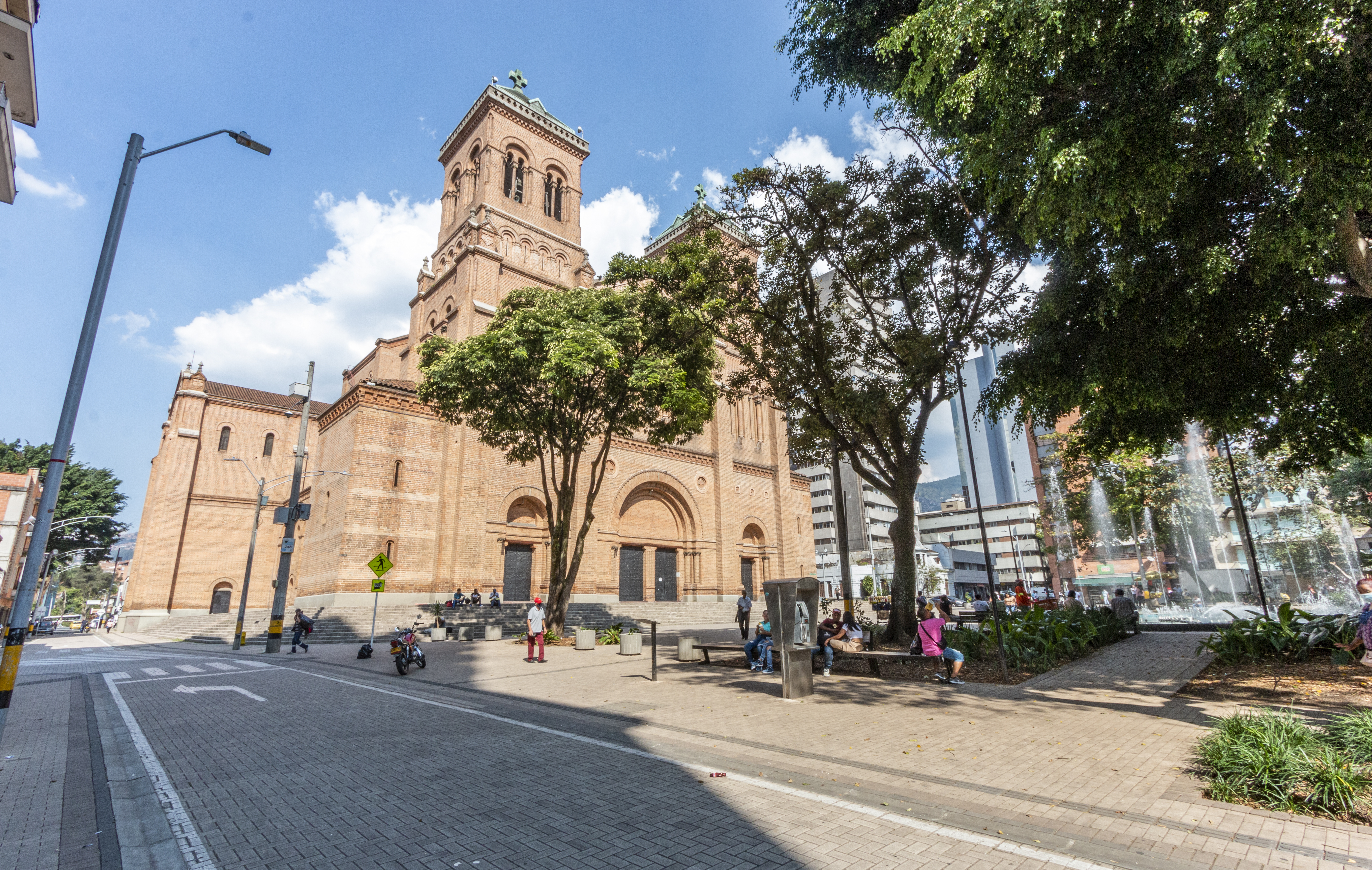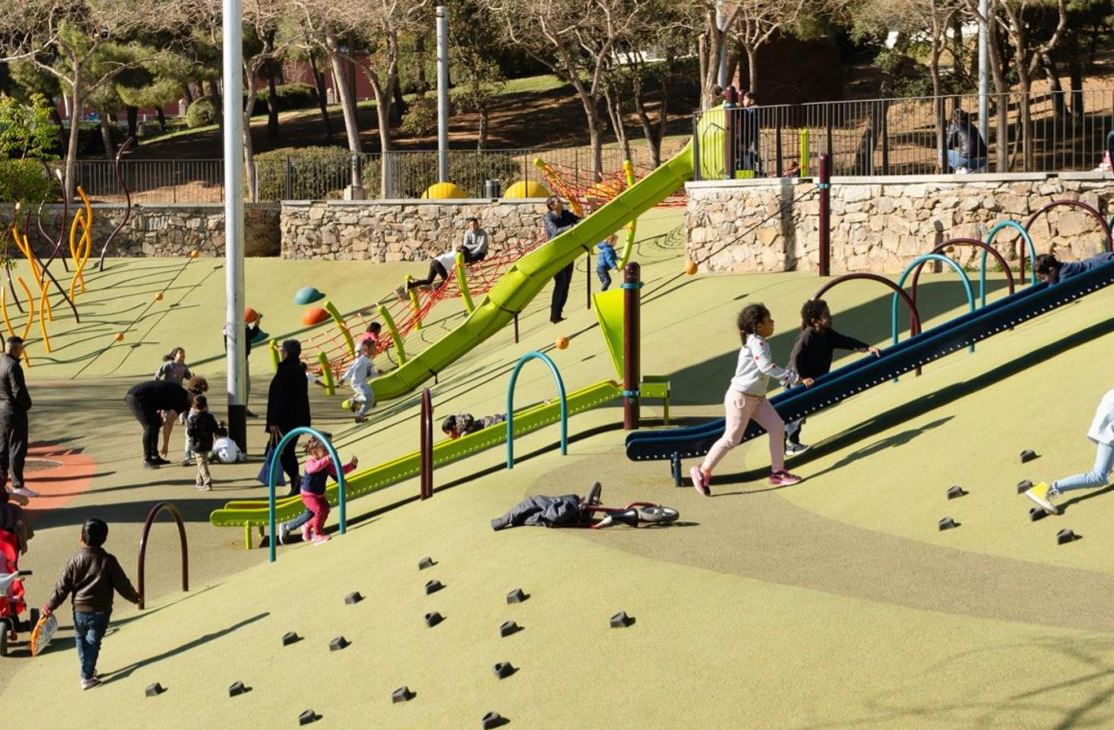Public spaces are those areas in the public realm that provide a public use or recreation function. They are generally located on publicly held land, are accessible to everyone and are mostly managed and maintained by local government authorities or other public agencies. Public Space interventions contribute to progress across numerous SDG targets and goals.
In the essay “Getting public space right: transforming society from the ground up”, author Laura Valdés Cano examines the benefits of public spaces and the important role they play in meeting the challenges of our rapidly urbanizing world.
Laura Valdés Cano is Head of Policy at Metropolis. Laura specialises in sustainability and social equity in cities with a focus on gender equality. Previously, Laura has held positions at OECD and the City of Paris.

Park Bolívar, Medellín. © Carolina Correa
Public space is not just a network of streets and spaces among buildings. It is the building block of our communities. From squares and streets to parks, markets and playgrounds, public spaces hold meaning. They define the culture of a city by shaping how people live and experience urban life. Public space helps determine the relationship between people and their surroundings. It has the potential to create a sense of belonging, cultural vibrancy and in turn to promote happiness and wellbeing. It is the role of metropolitan spaces to pave the way in creating better public spaces for all.
From a planetary health perspective, one of the goals of public spaces should be to reduce CO2 emissions and the heat island effect in metropolitan spaces. This can be achieved by creating green corridors, providing shade, reducing motorised traffic and promoting active mobility. While bringing nature back to urban areas is more important than ever, it is sometimes difficult to ensure that all communities benefit from these actions. As greening becomes a tool to make under-invested neighbourhoods more attractive and boost economic growth, these urban regeneration strategies can potentially displace existing dwellers through green gentrification.
Ensuring that all people benefit from green public spaces and infrastructure is key in promoting liveable and healthy environments and lifestyles.
The Covid-19 pandemic has influenced the concept of resilience and led many local authorities to include urban health as a key component of resilience. Extreme care should be taken when planning outdoor spaces to integrate health parameters. This means going beyond greening spaces and ensuring that public spaces promote socialisation, play, sport and facilitate caring activities. Preventing mental illness and improving overall wellbeing should also be a key element in the design of public spaces. For instance, the pandemic pushed metropolitan spaces to redefine projects to better cover peoples' needs and to work quickly to open additional public spaces. From increasing space for cycling and closing roads to create social meeting points and allowing additional space so restaurants could extend their terraces.
Les Planes Park, Barcelona Metropolitan Area. © Joan Guillama
Public spaces are not neutral and inequalities are often reproduced in urban public spaces. Integrating women’s voices and developing an intersectional analysis is key to transforming public spaces into places that foster belonging, equality, happiness and autonomy for all. Only by understanding the diversity of interests, experiences and social realities present in public spaces can metropolitan spaces become more equal and inclusive. This includes using gender mainstreaming strategies, universal design practices to make public spaces accessible to different groups, participatory and intersectional approaches to empower people and ensure the right to the city for all, regardless of age, ability, ethnicity, gender, sexual orientation or socio-economic status.
In the years to come, the challenge will be to incorporate a vision that is more people-centric and focuses on the specific needs and experiences of different groups to create truly thriving and resilient public spaces for all.
The maintenance and evaluation of public spaces can also be a challenge for local authorities. Many administrations are trying to address this by implementing evaluation tools that measure progress and the use of public space to identify potential safety issues and conflicts between uses. Nevertheless, the success of a particular public space should not only be measured quantitatively (i.e. by the number of people who use the space after an urban intervention) but rather qualitatively (i.e. on the benefits and usefulness of the space to local communities). What’s more, understanding how a public space changes over time and its ability to adapt to the needs of dwellers is key to success. The development of public spaces must therefore be an ongoing process.
About the Author
Laura Valdés Cano is Head of Policy at Metropolis. Laura specialises in sustainability and social equity in cities with a focus on gender equality. Previously, Laura has held positions at OECD and the City of Paris.
Further Readings:
Safety and Public Space Part 1
Safety and Public Space Part 2
Rethinking public space for a sustainable urban future
Issue Paper: Bringing nature back to the metropolis for all
MetroTalks podcast on healthy urban spaces
Getting public space right: transforming society from the ground up
